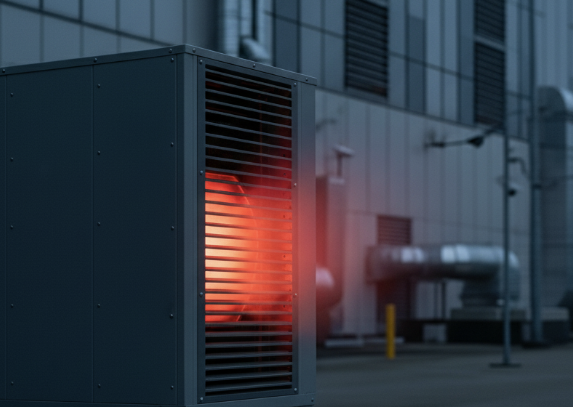
Wasted Power: Data Center Regulation in the UK
The UK has the third-highest number of data centres in the world, just behind Germany. While there are currently no direct requirements for waste heat reuse, existing climate policies could evolve to explicitly regulate efficiency and waste heat utilisation in the future.
The Climate Change Act
The UK’s Climate Change Act (established in 2008) is a legally binding framework to achieve net-zero greenhouse gas emissions by 2050. This means:
The UK’s total emissions across all sectors must be equal to or less than the greenhouse gases it can remove or offset, effectively making the country climate neutral.
The UK assesses progress on these targets through its independent advisory body, the Committee on Climate Change (CCC). Their latest assessment found that the UK is currently missing 72% of the emissions cuts needed to meet its 2030 goal and warned that much stronger action is essential to stay on track for 2050.
While the Act is described as “legally binding,” this can be a bit misleading. Unlike EU member states, the UK faces no actual direct penalties for failing to meet its targets. Instead, the main drivers for stronger net-zero policies are political and public pressure, especially as climate policy becomes increasingly tied to voter support.
For the data centre sector, three key UK regulations could drive mandatory waste heat reuse in the future:
- The Streamlined Energy and Carbon Reporting (SECR)
- Part L of the Building Regulations
- Heat networks as part of the Energy Act of 2023
The Streamlined Energy and Carbon Reporting (SECR)
The SECR is one of the policy tools designed to help the UK meet its Climate Change Act targets. It applies to large companies, including many data centre operators, and requires them to publicly report their annual energy use and greenhouse gas emissions. Similar to the EU’s Article 12, it promotes transparency and allows for benchmarking across sectors, but it does not set or enforce specific energy performance standards.
Part L Building Regulations
Part L is the section of the UK’s Building Regulations that sets energy efficiency requirements for new and refurbished buildings in England. Its purpose is to ensure that buildings are designed and constructed to minimise energy demand.
It applies to both new builds and major renovations, covering measures such as improved insulation, efficient heating and cooling systems, and the integration of low-carbon technologies.
In theory, Part L can affect planning approval for new data centers if a facility’s design doesn’t meet minimum efficiency standards. The building regulation doesn’t currently require waste heat to be reused, but with Part L’s focus on cutting operational energy use, it’s easy to imagine a future update that says all that waste heat has to be put to good use.
Heat Networks in the Energy Act 2023
The Energy Act 2023 is a newer piece of legislation that covers a lot of ground from energy security to low-carbon technologies. The section most relevant to data centres is the one setting out new rules for heat networks.
Heat networks are systems that supply heating (and sometimes cooling) to multiple buildings from a single central source. That source could be almost anything that produces heat, including waste heat from industry such as data centres.
£36 million from the Green Heat Network fund was invested in the Old Oak & Park Royal Development Corporation (OPDC) to build the UK’s first district heat network that uses waste heat from data centres.
Currently, the legislation does not specifically mandate that data centres supply heat to these networks. Instead, it sets up the legal framework with zones that can be designated, and buildings that could be required to connect or supply waste heat in the future. For now, participation is voluntary. But as infrastructure and policy develop, data centres in certain zones might legally be required to become part of heat networks
As noted in the EU section, waste heat can only be used to heat the local neighbourhood if a data centre is close enough to the right infrastructure. So, even with laws on heat networks, it doesn’t automatically follow that every data centre will be required (or even able) to supply heat to nearby areas.



